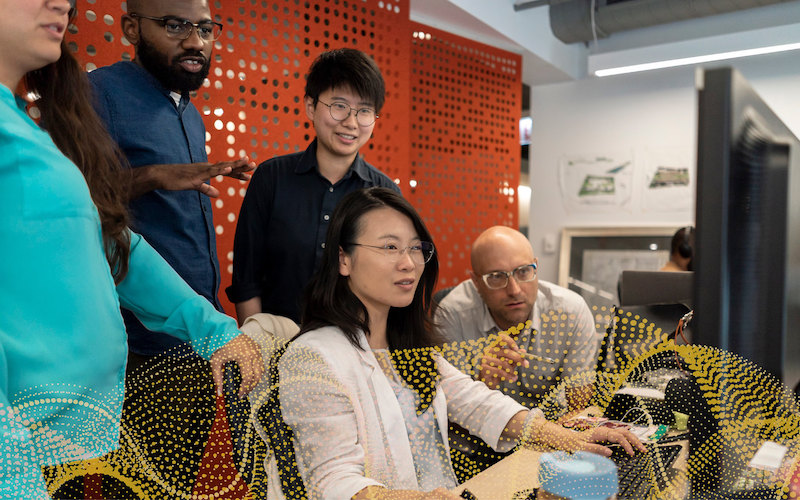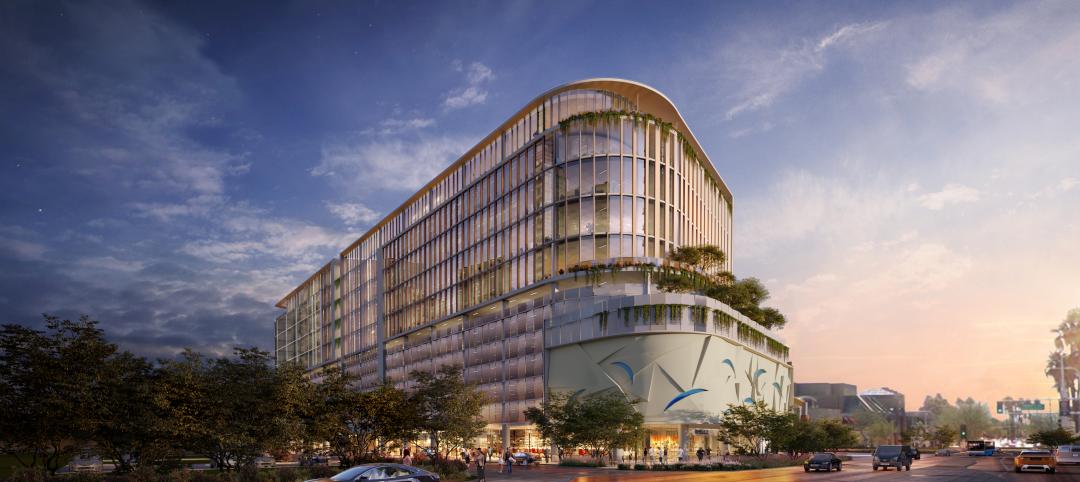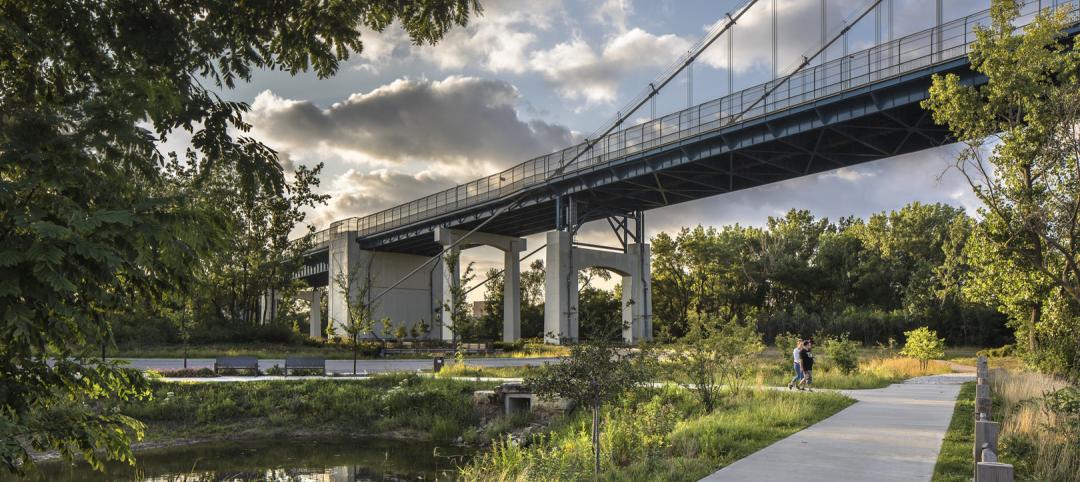As the oldest continually operating architecture and engineering firm in the country, SmithGroup has seen many changes in the world of design. We are always focused on our mission to Design a Better Future, so with the dawn of the 2020s upon us, we are anticipating what the coming decade will bring to our industry and profession. As designers, we can be more than advocates and advisors – we believe that we can be lobbyists and leaders for monumental changes that will have a broad impact on our communities and society.
In order to get a broad perspective on what our future might look like, we recognized that there was no better resource to tap than our team of 1,300 design professionals whose expertise stretches across a wide breadth of disciplines. We received insights from entry level designers to our most senior leaders and everyone in between, leading to a vision that anticipates four major drivers for design in the decade ahead:
Design & Technology
Like most professions, technology has had a major impact on design. We believe that this will increase at a more rapid pace in the decade ahead and will affect every stage of the design process.
At the early stages of design, “visualization tools will become more realistic and immersive, leading to a future where collaboration between the owner, contractor and designers will be far more integrated,” predicts Wayne Barger, health practice director.
As automation and the Internet of Things (IoT) continue to grow, designers are looking at how they can enable the experience that people have in the built environment and find ways to make buildings more responsive to occupants. “The connected environment along with personal technologies will provide ever-increasing customization for occupants,” says chief information officer Derek White.
All of this technology leaves us with tremendous amounts of data, yet most firms are just beginning to figure out what to do with it. “Those firms that can identify the most creative ways to visualize and simplify increasingly inordinate amounts of diverse data down to its most essential insights will be the ones to emerge as leaders within this new decade,” says Lauren Leighty, a landscape architect and campus studio leader in the firm’s Ann Arbor office.
Design & Climate
While technology holds a high degree of promise for our industry, the issue of climate change presents a tremendous risk in the decade ahead. “All designers will need to become more adept at understanding challenges that are not only faced by our individual discipline, but that touch multiple disciplines and require a truly integrated approach,” says Jessica Janzen, an architect in Dallas.
The way that we use energy resources needs to continue to evolve – practices that are the exception will become the norm. “Everything we design in 2020 and beyond should be net-zero energy or net-zero energy capable, achieving the maximum energy efficiency possible while being designed to accommodate future renewable systems,” says Greg Mella, corporate director of sustainable design.
“Buildings will have to be self-sustaining, regenerative and adaptable to human needs while still harmonious with the natural environment and the changes it brings with it,” asserts Sven Shockey, corporate design director in the Washington, DC office.
The good news is that we can make a difference. “The challenge for the industry is to not just design spaces that prevent impacts of disasters, but understand what new design environments may be,” says Laura Holman, an architect in Chicago.
Design & Cities
Advancements in technology and the changes to our climate will also have a significant impact in the shape of our cities in the decade ahead. Our urban systems must be prepared for these changes. “Cities, institutions and communities will turn their attention away from building-scale sustainability to focus on adaptation and implementation of more equitable support structures within communities. We’ll be designing for massive adaptation strategies at all scales,” claims urban systems strategist Steven Baumgartner in SmithGroup’s Pittsburgh office.
The impact of technology on transportation, will cause a major disruption in the way we design cities. Urban design co-director Michael Johnson agrees, “As new technologies and innovative business models pave the way for more resilient transportation solutions, alternative multimodal transit systems will become more popular.”
Design & Social Change
While the technology, climate and cities all around us are changing, we will need to change too. The 2020s will be an era of challenging systemic inequalities and prejudices and accepting the richness of experience our diverse society presents. We expect to see, “inclusive design for buildings and sites will challenge long-held but veiled attitudes toward historically marginalized and at-risk identities,” says Lori Singleton, corporate design director in Ann Arbor.
Designers will grapple with how spaces either promote or obstruct equity and will need to incorporate critical race theory, intersectionality and other social theories to decode existing spatial inequities and create more inclusive places. “Design will address gender and racial equity in the built environment,” says Merrill St. Leger, urban designer for SmithGroup in Washington, DC.
As designers who are influencing the built environment for years to come, we will need to ensure that all voices are heard. “Our industry must widen the net of inclusion. Design affects all of us, and must be made by all of us,” says John Moorhead, architect in the firm’s Boston office.
More from Author
SmithGroup | Mar 28, 2023
Inclusive design requires relearning how we read space
Pulling from his experience during a campus design workshop, David Johnson, AIA, LEED AP, encourages architects to better understand how to design spaces that are inclusive for everyone.
SmithGroup | Feb 27, 2023
Surfing the Metaversity: The future of online learning?
SmithGroup's tour of the Metaversity gives us insight on bringing together physical and virtual campuses to create a cohesive institution.
SmithGroup | Nov 28, 2022
Data centers are a hot market—don't waste the heat!
SmithGroup's Brian Rener shares a few ways to integrate data centers in mixed-use sites, utilizing waste heat to optimize the energy demands of the buildings.
SmithGroup | Aug 3, 2022
Designing learning environments to support the future of equitable health care
While the shortage of rural health care practitioners was a concern before the COVID-19 pandemic, the public health crisis has highlighted the importance of health equity in the United States and the desperate need for practitioners help meet the needs of patients in vulnerable rural communities.
SmithGroup | Aug 10, 2021
Retail reset: The future of shopping malls
Developers and design partners are coming together to reimagine how malls can create a new generation of mixed-use opportunities.
SmithGroup | May 17, 2021
Future pandemic preparedness at the medical district scale
The current COVID-19 pandemic highlights the concern that we will see more emergency events in the coming years.
SmithGroup | Jan 25, 2021
Amid pandemic, college students value on-campus experience
All the students we interviewed were glad that they returned to campus in one form or another.
SmithGroup | Aug 13, 2020
Renewing the healing role of public parks
While we can’t accurately predict all the ways we will respond to the current COVID-19 pandemic, it should provide a moment of reflection as we see all too clearly the consequences of our exploitation and destruction of nature.
SmithGroup | Jul 21, 2020
How design of senior living communities must change after COVID-19
The cost of maintaining high quality of care and high quality of life for senior living communities has increased up to 73% for senior living communities that remain free of COVID-19 and up to 103% for COVID-19 positive senior living communities.
SmithGroup | Jun 12, 2020
How will museums change after COVID-19
This new environment may herald innovative economic models and change the way we think about museum design.
















